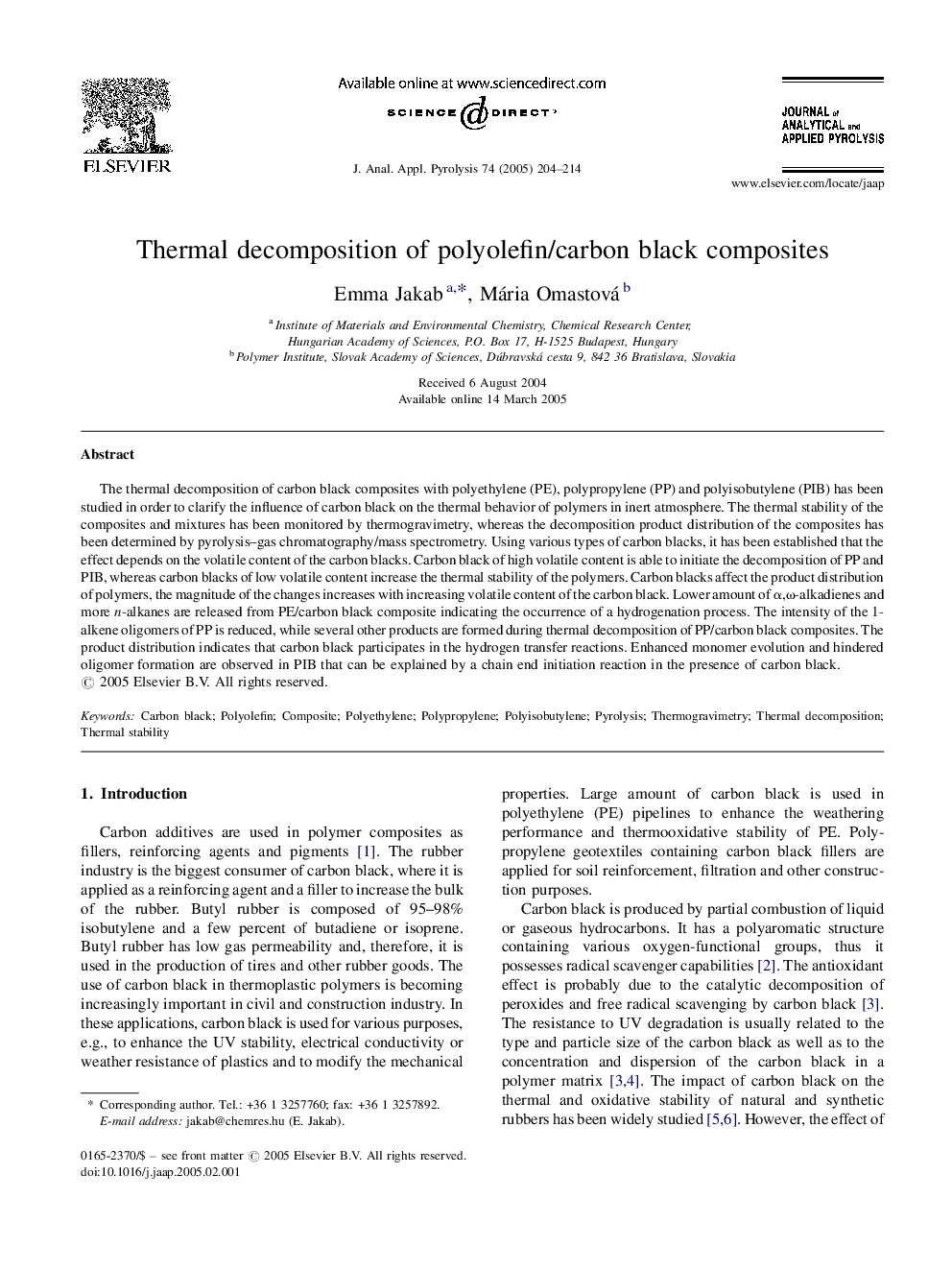| Article ID | Journal | Published Year | Pages | File Type |
|---|---|---|---|---|
| 9748191 | Journal of Analytical and Applied Pyrolysis | 2005 | 11 Pages |
Abstract
The thermal decomposition of carbon black composites with polyethylene (PE), polypropylene (PP) and polyisobutylene (PIB) has been studied in order to clarify the influence of carbon black on the thermal behavior of polymers in inert atmosphere. The thermal stability of the composites and mixtures has been monitored by thermogravimetry, whereas the decomposition product distribution of the composites has been determined by pyrolysis-gas chromatography/mass spectrometry. Using various types of carbon blacks, it has been established that the effect depends on the volatile content of the carbon blacks. Carbon black of high volatile content is able to initiate the decomposition of PP and PIB, whereas carbon blacks of low volatile content increase the thermal stability of the polymers. Carbon blacks affect the product distribution of polymers, the magnitude of the changes increases with increasing volatile content of the carbon black. Lower amount of α,Ï-alkadienes and more n-alkanes are released from PE/carbon black composite indicating the occurrence of a hydrogenation process. The intensity of the 1-alkene oligomers of PP is reduced, while several other products are formed during thermal decomposition of PP/carbon black composites. The product distribution indicates that carbon black participates in the hydrogen transfer reactions. Enhanced monomer evolution and hindered oligomer formation are observed in PIB that can be explained by a chain end initiation reaction in the presence of carbon black.
Keywords
Related Topics
Physical Sciences and Engineering
Chemistry
Analytical Chemistry
Authors
Emma Jakab, Mária Omastová,
